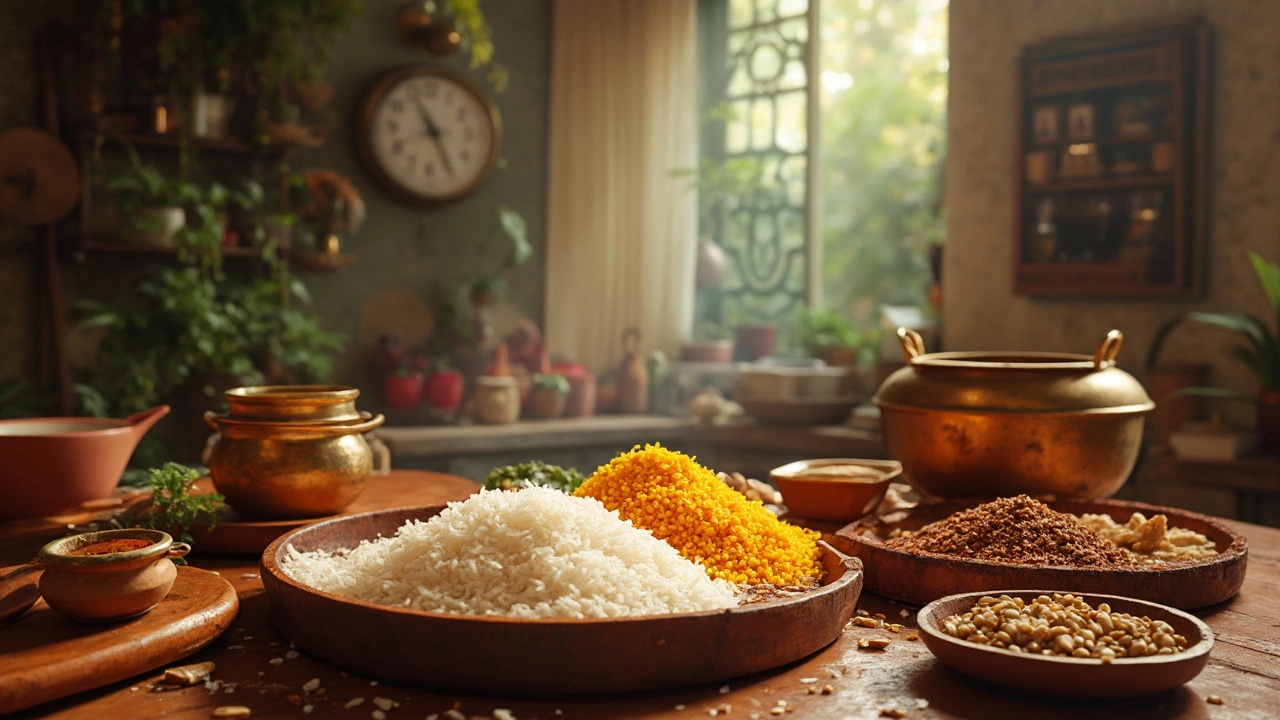How to soak urad dal: Tips, Benefits, and Quick Cooking Tricks
When you soak urad dal, you’re softening the black gram before cooking, which speeds up cooking time and improves digestibility, you’re doing more than just saving a few minutes on the stove. Also known as black gram soaking, the process helps break down anti‑nutrients, releases more protein, and makes the dal gentler on the gut. That’s why many South Indian households start every idli or dal batch with a good soak. Urad Dal, a protein‑rich lentil used in dishes like dosa, vada, and dal fry benefits the most because its thick hull can be tough if boiled dry.
Soaking isn’t a magic trick—it's a simple scientific step. By immersing the dal in water for 4‑6 hours, the seed absorbs moisture, which triggers enzymatic activity that reduces phytic acid. Less phytic acid means your body can absorb iron and zinc more efficiently, a key point for vegetarians. Dal Soaking, the practice of pre‑hydrating lentils before cooking also cuts the boiling time by up to 50 %, saving gas or electricity. This is especially useful when you’re preparing large batches for festivals or meal‑prep weeks.
Why the Soak Matters for Health and Taste
First, the texture. Soaked urad dal turns fluffy and smooth after grinding, which is essential for perfect dosas and idlis. Without a soak, the batter stays gritty, and the final product can be dense. Second, the flavor. Water activates mild fermentation‑like processes, giving the dal a subtle, earthy sweetness that deepens the taste of any curry or stew. Third, the nutrition. Studies show that a 6‑hour soak can increase the protein digestibility score of urad dal by around 10 %. That boost matters when you’re counting macro‑nutrients for a balanced diet. Finally, the digestion. Soaking reduces oligosaccharides that cause gas, making the dal kinder to sensitive stomachs.
What about the practical side? Use a bowl that can hold at least twice the dal’s volume, add enough water to cover it by a few inches, and toss in a pinch of salt or a splash of lemon juice—both act as natural softeners. If you’re short on time, a quick‑boil for 2 minutes and then a 30‑minute soak works nearly as well. After soaking, discard the water; it contains the released anti‑nutrients. Rinse the dal and you’re ready to cook, pressure‑cook, or grind into batter. The same method applies to other lentils like moong, chana, or toor, making it a versatile kitchen habit.
Now that you understand the science and see the clear benefits, you’ll notice how every recipe that calls for urad dal feels faster, lighter, and more flavorful. Below you’ll find a curated set of articles that walk you through everything from the basics of dal nutrition to advanced tricks for perfect dosa batter. Dive in, experiment with the soaking times, and let your kitchen routine evolve with these practical insights.

How Much Time to Soak Rice and Urad Dal for Dosa?
Making the perfect dosa starts with knowing how long to soak rice and urad dal. This guide covers the ideal soaking times and practical tips to achieve that crispy texture. Soaking times depend on factors like temperature and grain quality, but generally, rice needs 4-6 hours and urad dal 4 hours. Here, we delve into why these times work and what you can do to tweak your dosa-making process.